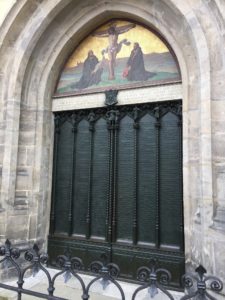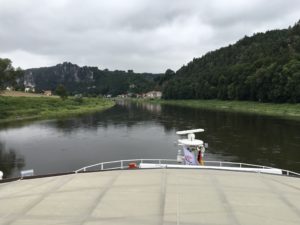
Today, as we traveled from Wittenberg to Berlin we also traveled forward in time from the sixteenth century to the eighteenth century as follow the Reformation forward in time.
We drove north from Wittenberg to Worlitz Palace and Gardens, which were created by Duke Leopold III of Anhalt-Desault (1740 to 1817) after returning from a Grand Tour of Europe.
Leopold was also strongly influenced by the Enlightenment, as was the man at the center of our next stop.
Further north on the way to Berlin, we stopped in Potsdam and Sanssouci Palace of Frederick the Great. Sanssouci is French for “without cares.” Sanssouci was Frederick the Great’s summer palace. It was beautiful, but it was so hot outside it was almost unbearable, and it wasn’t much better inside the palace. Terri correctly noted Sanssouci must really mean “without air conditioning” because all we cared about was finishing the tour, buying a bottle of water, and getting back on the bus.
Frederick the Great (1712-1786), King of Prussia, was also a student of the Enlightenment. It certainly appears Frederick the Great was not a Christian, and at best was a theist. In fact, Enlightenment philosopher Voltaire lived at the palace for three years and was the court philosopher. Voltaire made the famous statement, “The Holy Roman Empire, was neither holy, nor Roman, nor an empire.” Continue reading “Reformation Tour—Day 10”




